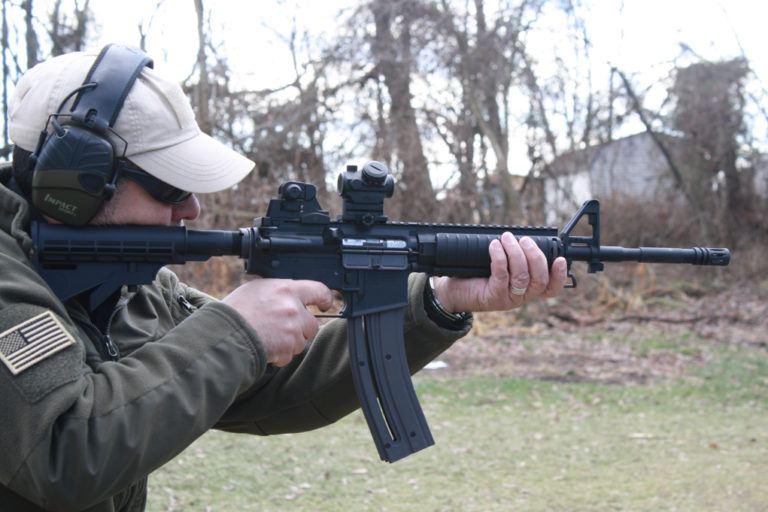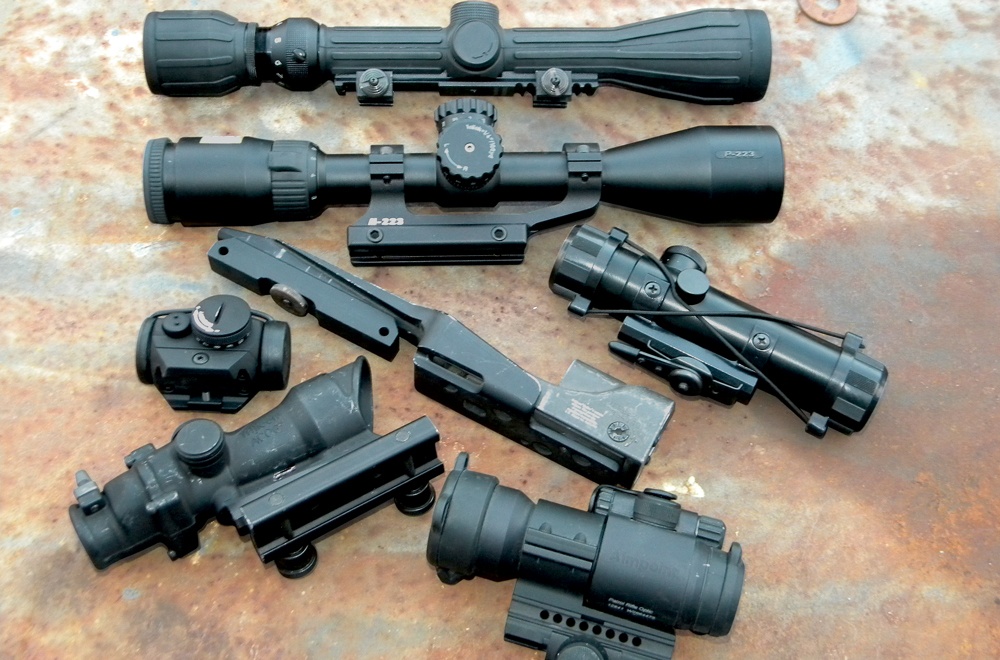
Choosing the right, and necessary, gear modifications and upgrades for your AR doesn’t need to be complicated, but it does require some careful thought.
What you need to consider when decking out your AR:
- Building A Winner
- Whittling Away Weight
- Shooting For Simplicity
- Revered Reliability
- Considering Cost
- Take Time To Test
It’s near the first of the year, and we’re all thinking about new gear for our ARs. The temperatures have dropped, the ARs are sitting idle — and we’re staring at them fondly, pondering what modifications or additions we should perform. And SHOT Show is coming up in January, where manufacturers will be presenting their latest wares, adding to an already long list of accessories available for the AR … for your AR.

With this many options, how do you choose what gear you actually need? The answer is: with careful consideration, research and testing.
When thinking about modifying your AR, first consider the anticipated use of that particular rifle or carbine. (This also includes AR pistols, which are rising in popularity.) Is it for general use, including self-defense? Or is it for a specific task, like a SPR — special purpose rifle — for long-range accuracy? Then ask yourself what parts/modifications are necessary to fulfill that application. Think long and hard about your AR’s “mission statement.”
Building A Winner
My goal with every AR is to make it lightweight, simple and easy to use. For me, weight is always a factor. Whenever you see a gun with a metric ton of accessories bolted onto it, you can bet the owner doesn’t really use it for training, practice or carrying it around for long periods of time. A hardcore AR owner will have things pared down to the absolute minimum.
Whittling Away Weight
There are a couple of areas where you can save significant weight, such as a thin barrel vs. a heavy barrel. The majority of weight savings is achieved by saving a little bit of weight here and there. Obviously, the fewer accessories, the lighter the weapon.
Things got crazy the last time we had bad tornadoes where I live. There was lootin’ ‘n shootin’ in areas near us, so I carried my carbine constantly for three days. I really appreciated its reduced weight factor. Even on an SPR, which usually has a longer, heavier barrel, you can get weight savings by shaving off a little here and there.
Shooting For Simplicity
Simple is always good. Serious work means I’m shooting a living target. It might be harvesting game for the table, a varmint that needs eliminating or a human threat intent on doing harm to my family or me. For these applications I want a weapon that’s easy to operate. The more complicated the gear, the longer it takes to get it ready. The more pieces there are, the higher the chances that one of them will end up malfunctioning or failing. Yes, today we have outstanding, reliable gear, but this logic still applies. Keep it simple, for ease of use and reliability.
Revered Reliability
And reliability is mandatory. In the field or on the street, there are no alibis or mulligans. When you press the trigger, the shot goes where you need it and the weapon functions fully, ejecting and loading a fresh round, every time. How do you find out what works?
There are thousands of gear reviews on the ‘net. Read reviews, especially in different forums. You can find out what hunters think about something, and how that gear has functioned on the range and on the street. Don’t just read the top reviews. Read the ones that rank that product in the middle and those who thought it sucked. The lowest reviews will often reveal a deficiency that is very specific. “Product X didn’t have feature B.” If you’re never going to use feature “B,” then it’s not a problem.
If a few reviews out of a thousand mention a faulty product, it’s not a big deal. Everyone will produce a few duds. The key is understanding how that company dealt with it. If they took care of it immediately, then I’m not concerned. If lots of people had problems with a defective product, then it’s not something I’m going to waste my money on. If you know someone who has that gear or modification, ask if you can test it. Take time to research before spending any money.
Considering Cost
For most of us, cost is always a consideration. At the same time, make sure to spend the money to get what you need. You’re considering a new scope and have narrowed it down to two choices. Both are fairly expensive, one slightly higher than the other. The higher priced one is perfect; it fits your needs exactly. The less expensive one “might” work most of the time. Maybe.

You decide to save a few bucks and go with the cheaper model. You bolt it on and hit the range, excited about your new gear. It’s a disappointing trip, and now you’re spending more money to buy what you should have purchased in the beginning. Spend the money necessary to get the right gear — it will do what you need and it will likely last a lifetime.
Always think about the pros and cons of a purchase. Does it fit a specific need? Every modification/part has advantages and disadvantages. At my age, a good optic assists me with speed and accuracy. It adds weight, bulk and complexity, but this is a good trade-off to acquire the target quicker, especially under low-light conditions, and improve my accuracy. Easy decision. Before choosing a new accessory or modification, make sure you understand its true purpose. Carefully consider its design, the pros and cons and if it fills your need.
Take Time To Test
After getting the weapon modified, hit the range to test it. Self-defense weapons should be tested under all types of conditions. Testing under perfect conditions might not point out a specific issue: Work with it in the dark, while it’s raining and when it’s cold.
Please do not modify your gear and then go to a training class to test it. Training is the introduction of new techniques. There will be plenty to focus on without being distracted by trying to figure out how something works or experiencing technical problems. Testing should be done during practice, not during training. Practice, which is repetition, is when you learn how your gear works.
If something doesn’t fit your needs or function the way you thought it should, don’t be afraid to start over, regardless of what you paid for it or how cool it might look. Sometimes progress means taking a step back and reevaluating the situation. Research and study will help prevent this, but sooner or later you’re going to make a mistake. Like I always tell people, “If you’re not making mistakes, then you’re probably not doing it right.”
One of the AR’s great features is its modular design. It’s easy to swap parts. Modifications can be simple or complex. One example is installing a Colt “Gold” extractor spring into the bolt for increased reliability. Changing stocks is a great way to make the AR fit your exact needs. You might decide on putting together a new upper assembly with optics to meet a specific application to bolt onto a lower receiver you already have.
Regardless of the modification or accessory, take the time to choose wisely and test it thoroughly. When you do get your AR just so, know that it will provide you with a lifetime of reliable service.
Editor's Note: This article originally appeared in the January 2018 issue of Gun Digest the Magazine.

Next Step: Get your FREE Printable Target Pack
Enhance your shooting precision with our 62 MOA Targets, perfect for rifles and handguns. Crafted in collaboration with Storm Tactical for accuracy and versatility.
Subscribe to the Gun Digest email newsletter and get your downloadable target pack sent straight to your inbox. Stay updated with the latest firearms info in the industry.

![Best Concealed Carry Guns In 2025 [Field Tested] Wilson Combat EDC X9S 1](https://gundigest.com/wp-content/uploads/Wilson-Combat-EDC-X9S-1-324x160.jpg)


![Best 9mm Carbine: Affordable PCCs [Tested] Ruger Carbine Shooting](https://gundigest.com/wp-content/uploads/Ruger-Carbine-Shooting-100x70.jpg)
![Best AR-15: Top Options Available Today [Field Tested] Harrington and Richardson PSA XM177E2 feature](https://gundigest.com/wp-content/uploads/Harrington-and-Richardson-PSA-XM177E2-feature-100x70.jpg)

I loved it when you said that choosing the right, and necessary, gear modifications and upgrades for your AR doesn’t need to be complicated, but it does require some careful thought. I will share this with my uncle, who is fond of rifles. I’m sure he will be looking for these Gun Optics Accessories, buy some, and add to his collections. https://www.aec-outdoors.com/catalog/optics